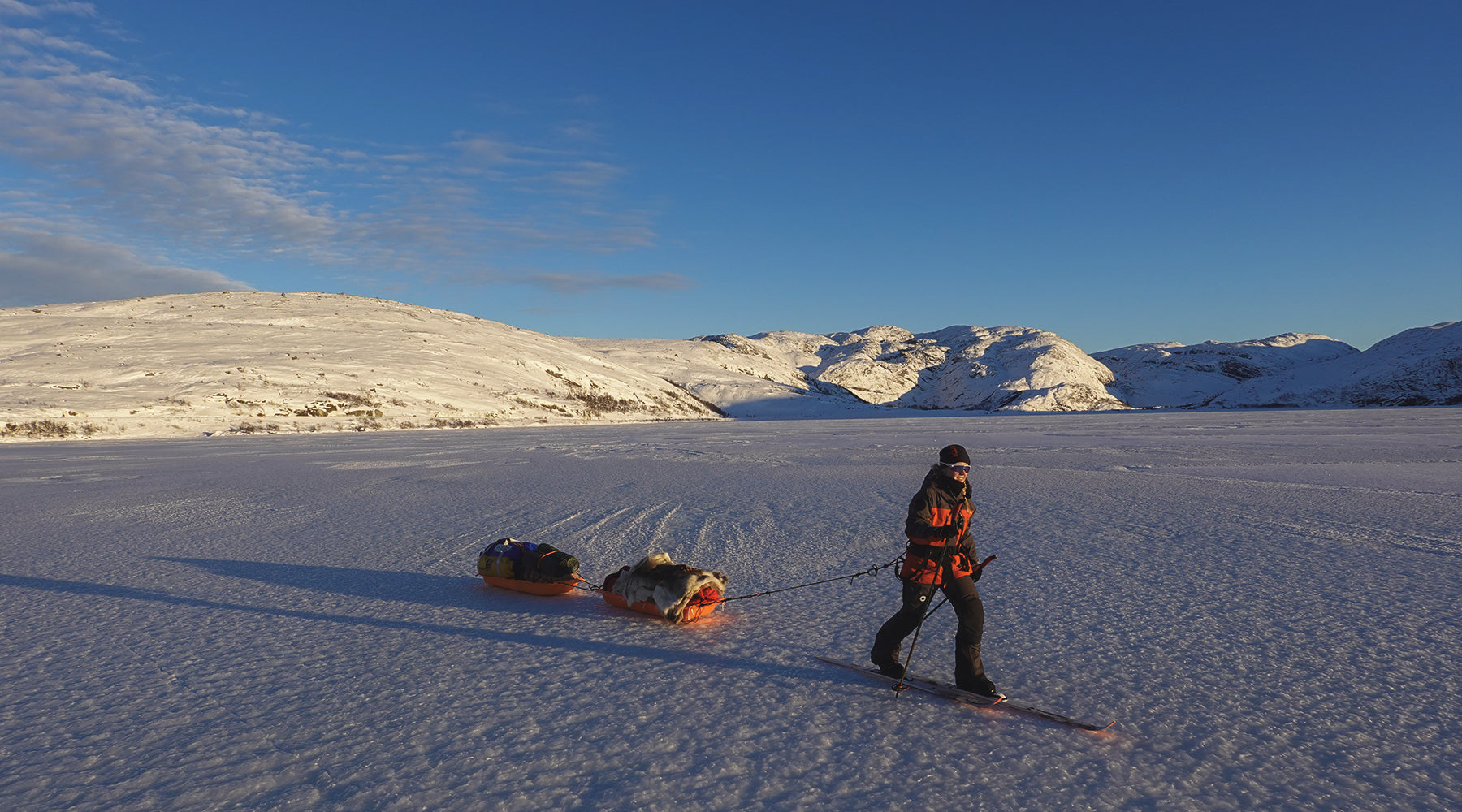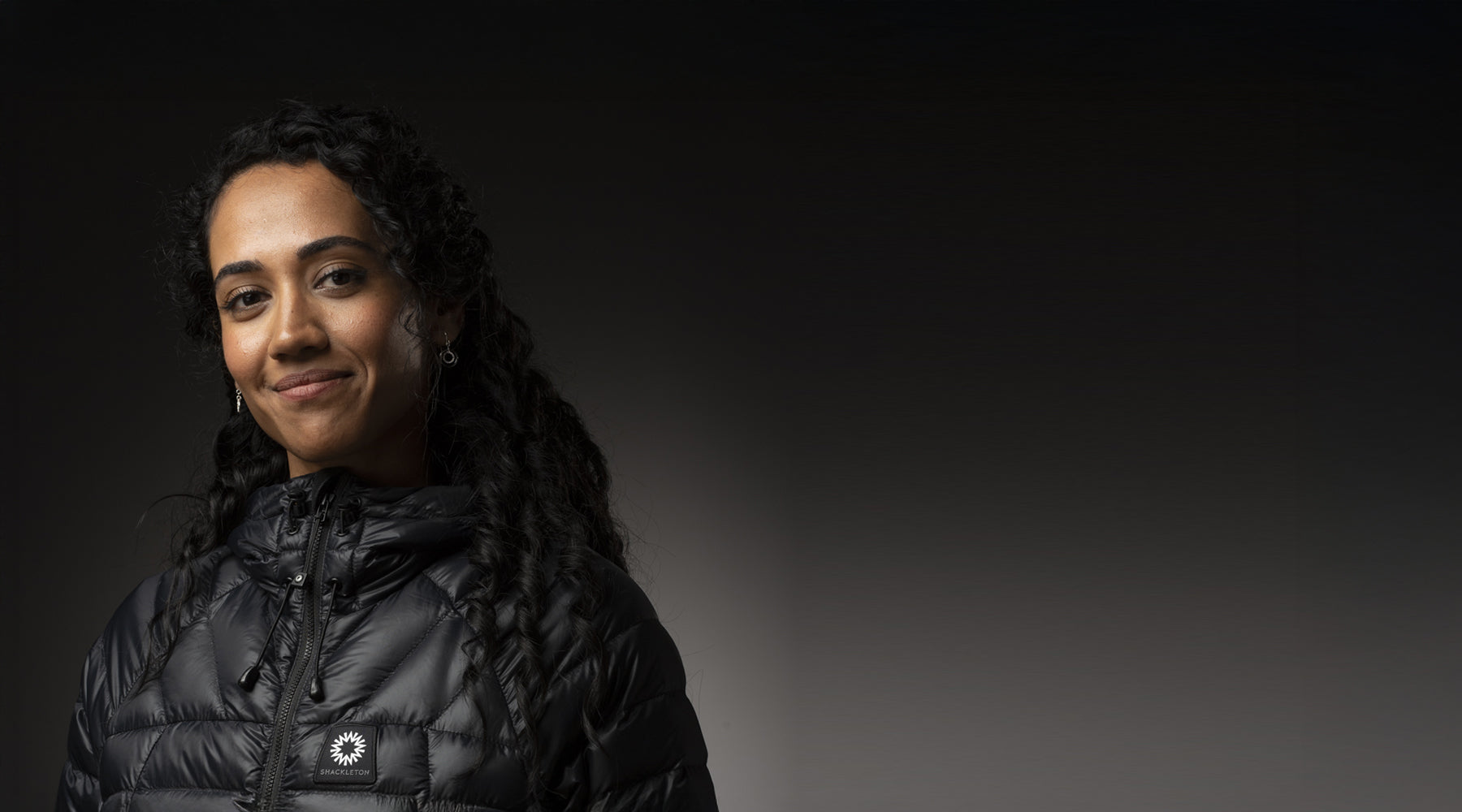
Cat Burford: A Polar Journey Fueled by Resilience, Research, and Inspiration
Balancing Full-Time Work with Intense Preparation
Balancing a full-time career with a solo polar expedition may seem daunting, but for Burford, it’s all about maximising every minute. She adjusted her schedule to fit in early-morning workouts and evening training sessions. “In the summer, it’s easier to get up earlier, so 5:00 am became my new wake-up time for a workout before work,” she explains. “In the evenings, I’d do other training if I had some free time. I think when you want something that much, you find the time.” Burford's experience as a dentist, accustomed to working with tight schedules and high precision, means she has innate organisational skills - also crucial for polar travel, where every item in her pulk needs to be meticulously arranged and her routines need to be dialled.
“My pulk is packed with my essentials on-hand at the top, so I’m not digging through everything,” she says. “Food and layers are near the front, while things you don’t need often are further down. Packing well-balanced also helps because in Antarctica, the wind is brutal, and you risk tipping over, which wastes time and energy. So, keeping the pulk balanced is crucial.”
From Classroom Dreams to Shackleton Challenges
Burford’s passion for polar exploration began when she was just 14, inspired by a geography teacher who introduced her to Antarctica. “That was the moment the Antarctic got into my head,” she recalls. The dream was more than just a passing interest; it became a goal that guided her through various training expeditions, including the Shackleton Finse Polar Skills and Expedition Challenges followed by a 39-day journey across Greenland.
Meeting polar explorer and Shackleton guide, Wendy Searle on the Finse Polar Skills Challenge fuelled her ambition. Searle’s similar background made Burford realise that her South Pole goal was within reach. “After meeting Wendy, there was no going back,” she says. The expedition to Greenland solidified her readiness for the unexpected, with everything from weather delays to food shortages testing her resilience.
Confronting the Challenges of Polar Travel
During her Greenland expedition, Burford faced a low point when she ran out of food - a critical moment that taught her to value preparedness over light packing. “That was tough,” she says. “Toward the end, I had gotten used to a certain amount of calories per day. We thought we’d get a food drop, but then we were told there’d be no helicopter drop for four days. I’d already eaten my last noodles, so we pooled any leftover food. But, yeah, food and my mood are closely linked, and that was the lowest point.”
She’s made changes to avoid repeating this mistake. “I’m taking extra food this time, even if it adds weight to my pulk,” she shares. “I’d rather have the security of knowing I won’t run out.” The experience also revealed gaps in polar research specific to women. “When I started training, I looked up studies on nutrition, training, and gear, but most of the research was based on men,” Burford explains. With support from her sponsor AXA, she hopes to further women-focused research on endurance in extreme environments. “Women actually seem better suited to endurance polar travel, but the science isn’t there for us yet. If we had research specifically for women, we could improve even more.”
In Honour of a Beloved Mentor
A tribute to her former geography teacher, Allison Taylor, will accompany Burford on her expedition in the form of an embroidered name on her pulk harness. Taylor’s passion for geography and her encouragement to explore beyond conventional careers had a profound impact on Burford. “She was a brilliant teacher, very supportive and encouraging but also straightforward and no-nonsense,” Burford recalls. “She made learning so much fun and took us on field trips that fuelled my love for exploration.”
Although Taylor passed away before Burford could reconnect with her about this expedition, her legacy lives on in Burford’s journey. “I have her name embroidered on my sled harness - she’s definitely one of my ‘mental compasses,’ so to speak, guiding me through the tough moments,” Burford says.
After her expedition, Burford hopes to inspire young students, just as Taylor inspired her, by sharing her journey and showing them the world beyond the classroom walls.
Looking Ahead: A Journey of Resilience and Reflection
Burford’s route from Hercules Inlet to the South Pole will take an estimated 50 to 55 days, during which she’ll also participate in a mental health study with the University of Exeter, tracking her strategies for handling isolation and stress. “I’m working with the University of Exeter on a study about mental health coping strategies in extreme isolation, comparing men and women,” she says. “I’ll answer questionnaires each evening throughout the expedition to track my mental state.” She’ll rely on a mental checklist to stay focused and manage the expedition’s intense demands. “For me, it’s all about managing the small details and focusing on one day at a time,” she explains.
As she prepares for her November 27th birthday on the ice - with a celebratory margarita tucked into her pulk - Burford’s excitement is tempered with the recognition of how far she’s come. Her journey to the starting line involved not only physical preparation but also securing sponsorships and building a support network. “The biggest challenge was getting to the start line - raising sponsorship, organising everything. I knew the physical side I could manage. But the logistics? That was unknown territory,” she admits. For her, reaching Antarctica’s vast white expanses represents both a personal achievement and an opportunity to amplify women’s voices in polar exploration.
A Legacy of Inspiration
Burford hopes her expedition will inspire others to push boundaries and pursue dreams that may seem impossible. “Women don’t shout enough about their achievements,” she notes. “I want to change that.” With her resilience, her dedication to research, and the memory of her mentor guiding her, Cat Burford is set to make her mark on Antarctica and beyond.


